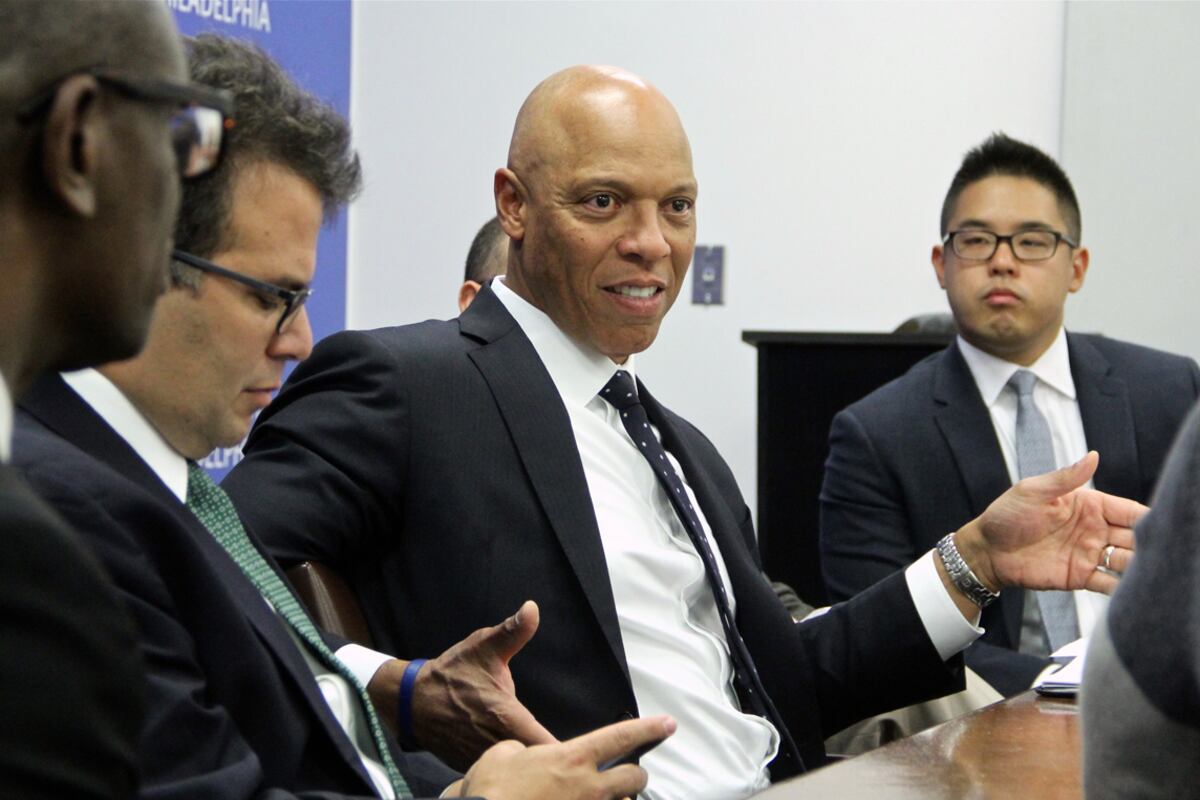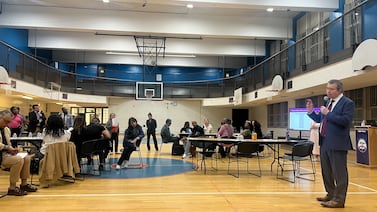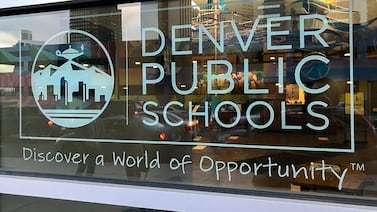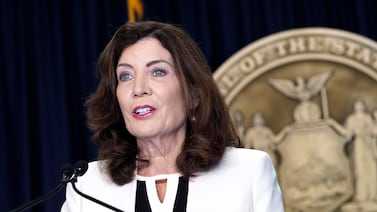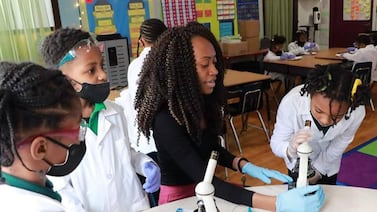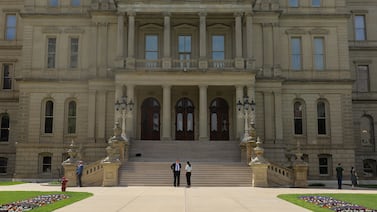The School District of Philadelphia plans to open school buildings to students in prekindergarten through second grade next month for a mix of in-person and digital learning, Superintendent William Hite announced Wednesday.
Students are due to return Feb. 22, with staff expected to start preparing on Feb. 8.

Hite presented similar plans last summer to reopen schools in September, and again to start in November. Both times, the plans were delayed, the first time after bitter opposition from parents and teachers, and then primarily by a late fall surge in cases of the coronavirus.
The prolonged absence of most of the city’s children from school, now approaching a year, is taking its toll on the city and on families, Hite said, declaring that it is time to start phasing in hybrid learning as a start to restoring normalcy.
Teachers and others have been doing “heroic” work to educate children virtually, Hite said.
But “We know that children, especially our youngest learners, and those with complex needs, learn best in person,” he said. “We also know that being out of school buildings has not been easy for far too many of our students and their families...we have an obligation and we must take action now.”
The youngest children, those learning to read, are especially vulnerable to learning loss, Hite said.
Hite said that he hoped additional groups of students, starting with those with complex needs, including English learners and children with disabilities, will be able to phase back into some in-person learning by March, adding that all future plans “will be guided by science.”
Hite also expressed concern that “escalating violence and feelings of isolation are tragic consequences of the pandemic,” a point driven home by City Councilwoman Maria Quinones-Sanchez, chair of the education committee, whose Kensington district is mostly Latino and low-income.
“Many of the students that I represent are only safe in our school buildings, they only eat in our school buildings, they only learn in our school buildings,” she said, repeating what she said at a council hearing last week. “And I stand by those words.”
Hite and Sanchez also said they both would push for teachers and other education workers to be moved up in the hierarchy of those next in line to be vaccinated. “City council is committed to advocating strongly with the mayor and the health department that vaccinations of teachers get prioritized,” Sanchez said.
A district spokeswoman said they would advocate for workers who are needed for the Pre-K to second grade population — about half the estimated 18,000 educator workforce — to be put to the very top of the educator list.
The hybrid plan calls for students to come back two days a week, in shifts, and learn remotely the rest of the time.
In November, when the district surveyed families for a nearly identical plan, 9,000 students elected to return to school buildings for hybrid instruction, while 6,500 decided to stay entirely virtual, and the remaining students submitted no choice, staying all virtual by default. There are about 30,000 pre-K through second grade students in the district.
Only students who chose the hybrid model in the fall survey will return to in-person school Feb. 22, officials said. Other students will be able to opt into hybrid at a later date “when we can safely phase in more students,” Hite said.
According to a Chalkbeat analysis of school-by-school data, schools with larger percentages of white students saw a moderately higher rate of parents selecting the hybrid model over fully virtual. And in schools with three-quarters or more economically disadvantaged students, families in general were less likely to select hybrid. There is also a marked difference in building conditions across the city.
Hite also outlined measures the district has taken to prepare school buildings and the safety precautions that will be enforced.
Students and adults will be pre screened before entering school buildings, personal protective equipment will be available, and mask wearing will be mandatory. Bathrooms and classrooms also have been adapted to ensure social distancing, and plexiglass barriers were installed in offices and classrooms. Cleaning protocols have been enhanced with EPA-approved supplies, and 75 new cleaners have been hired. Touchless hand sanitizer has been distributed throughout buildings, and water fountains are also touchless. Signs promoting social distancing in hallways and classrooms have been installed.
Karyn Lynch, the district’s chief of student support services, said that all staff, and parents on behalf of their children, will be required to answer a series of questions about their health every day, and that there will be regular “asymptomatic testing” of a certain percentage of people, using rapid COVID-19 tests provided by Children’s Hospital of Philadelphia that provide results within 15 minutes.
In the fall, as part of its contract, the Philadelphia Federation of Teachers signed an agreement with the district, complete with a grievance procedure, to monitor and enforce safety conditions.
PFT president Jerry Jordan said that his union plans to vigilantly monitor whether the conditions are strictly followed. He said he still has concerns over the adequacy of ventilation in many school buildings, a skepticism shared by many parents and teachers.
“I want to honestly say to my members that ask if my schools are going to be safe for me to go into,” he said. “I want to be able to say it is safe.”
He said he would “prefer” that teachers be vaccinated before returning, but is not insisting on it. Robin Cooper, president of the union that represents principals and other administrators, reiterated the need for educators to be declared essential workers.
She and Jordan said there have been COVID-19 cases among workers who have already returned to school buildings, although Lynch said that the rapid positive tests have all turned out to be negative.
“Administrators and all school staff must be given the status of essential workers so they can be given the vaccine,” Cooper said. “This is the safest and the only way.”
Skepticism remains among parents and teachers, especially around the adequacy of ventilation and other conditions in the district’s aging buildings, which have been plagued with toxins including asbestos and lead paint, the result of decades of deferred maintenance.
Since schools closed last March, the district has conducted air-balancing studies in all schools and upgraded ventilation in many buildings in recent months, either retooling existing systems that had been neglected or installing window fans that more efficiently circulate air. Maximum occupancy has been listed for each room, based both on ventilation and on social distancing requirements; in each case, the lower number will be enforced.
Class sizes are halved under a hybrid model, with no more than 15 students in a classroom at once. But the actual number of children in classrooms will likely be much lower because less than a third of eligible students elected to return.
In October, just one-third of elementary classrooms were safe for that many students, a Chalkbeat analysis of school ventilation reports found. After the remedial work around ventilation, the district commissioned retests for many schools that now show most elementary schools have sufficient numbers of adequately ventilated classrooms for the number of students expected to return. Hite said mechanics will continue to repair ventilation systems in areas that didn’t meet standards, and window fans have been installed in some rooms to improve air flow and ensure occupancy safe for up to 18 people.
A new set of reports that measure safe occupancy by social distancing guidelines in addition to ventilation is available through the Reopening Readiness Dashboard. So far, there are social distancing reports for 45 schools.
Hite noted that the health department “at any time” could order schools or classrooms to be closed due to a COVID-19 outbreak, and he said that district staff was well prepared “to support smooth transitions between hybrid and digital learning models when needed.”
“I want to be clear, COVID will come to schools, it is not a matter of if, but when,” said Gail Carter Hamilton, a pediatric resources manager in the city health department. “Our job is to help the...school district of Philadelphia to know what to do and be prepared when this happens.”
As the pandemic isolation has dragged on, Hite, Kenney, and Farley have consistently sought to balance the damage to children as a result of learning loss and the absence of socialization with the risks of resuming in-person instruction. More than 100 private schools have remained open for hybrid learning since September, and the health department reported that they had seen nine “outbreaks” of COVID-19 since the fall — defined as six or more cases within a 14-day period — that could at all be attributed to spread within the school.
The reopening announcement comes a day after the Centers for Disease Control and Prevention declared that “most available evidence” shows schools can stay open if safety precautions are followed.
Last week, Dr. Susan Coffin, a professor of infectious diseases at the University of Pennsylvania, said at a forum sponsored by the Policy Lab at Children’s Hospital of Philadelphia that school could even be safer for children than staying home. “Schools may be little islands of safety,” she said.
At the same forum, the top education official in Rhode Island, where most students have remained in school, said that all-digital learners actually had higher rates of COVID-19 infection than those who attended school.
Deputy health secretary Dr. Caroline Johnson said on Tuesday that the city is looking to partner with a city hospital to vaccinate what she estimates are 20,000 education workers. But she said such an effort would not start for several weeks. Johnson also said that the city would take responsibility for vaccinating Philadelphia teachers who live outside the city.
Teachers are behind those who work with the elderly, corrections and transit workers, police, firefighters and others. Farley explained that while it is important to vaccinate teachers, he noted that the people these others encounter as part of their jobs are more likely than children to get sick or die from COVID-19.
“We will continue to advocate for district staff to have access to the vaccine as soon as possible,” Hite said. “At this time, we don’t know exactly when and how many doses of the vaccines will be available to district staff given supply constraints.”
Neena Hagen contributed reporting and data analysis.


